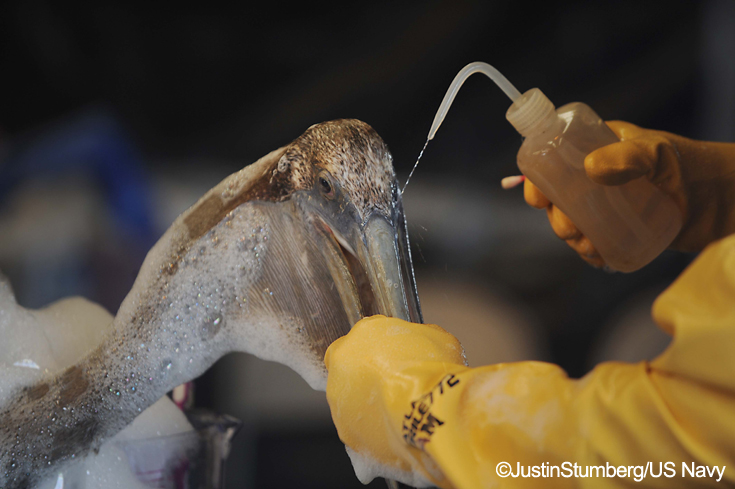800,000 and Counting: The Soaring Deepwater Horizon Bird Death Count

According to a new study, scientists estimate that between 600,000 and 800,000 coastal seabirds died because of the BP Deepwater Horizon oil disaster, a number far greater than any previous estimate. Understanding the ripple effect of 800,000 coastal birds dying in the Gulf of Mexico is critical to the recovery of this special place. These findings come from a study to be released this summer in Marine Ecology Progress Series, which was recently reported in the New York Times.
This new estimate for bird deaths in the Gulf is unprecedented for an oil disaster. For context, the estimate of dead birds following the Exxon Valdez Oil Spill was around 300,000.
What are the ecosystem effects of 800,000 birds dying?
In response to the study results, BP has released statements refuting the methodology and objectivity of the authors. Many of the studies that BP cites as counter arguments have not been shared with the public, and as far as we know, have not been peer reviewed. BP’s veil of confidentiality prevents the public from understanding their methodology and results. This is an obvious double standard, and we must ask ourselves: who has more to gain from discrediting these findings and underestimating bird mortality than BP?
In order to increase transparency and have an accurate discussion about how to best estimate bird mortality or other impacts, it is necessary for all of the data and methods be on the table. This is critical information that managers and scientists need in order to know the full extent of the injury. And BP is blocking this information because they’re in the middle of a legal battle over the oil disaster.
The bird death study comes at a time when BP is refusing to pay for key science critical to fully understanding the effects of the disaster on natural resources. This science is part of a series of ongoing studies under the Natural Resource Damage Assessment (NRDA) that BP previously funded. The fact that they are refusing to pay for this science at a time when some NRDA studies are underway, is telling. It is imperative that BP fund ongoing and future NRDA studies. These studies, required by the Oil Pollution Act of 1990, are designed to assess the extent of injury to natural resources and the subsequent restoration needed to compensate for that injury. Trustee agencies carry out NRDA studies, but the responsible party—in this case BP—is required to pay for them.
As the authors of the new study indicate, it is very likely that even this new examination of bird deaths underestimates the true number of birds killed by the disaster. For example, birds living in the coastal marshes or past 40 kilometers from shore (what scientists call offshore pelagic birds) are not included in the total. The range of impacts estimated in this new study contributes to our evolving understanding of what should be done to restore injured bird populations. Ocean Conservancy is focused not only on tracking the best available science to determine the full impact of the BP oil disaster, but also how we can restore the Gulf’s marine and coastal environments. There are opportunities to use innovative technologies to monitor and restore bird populations in the Gulf. We’ll explore these solutions in a future blog.
To view where some of the coastal seabirds make their home in the Gulf, our Marine and Coastal Atlas has maps of the northern gannet, brown pelican and royal tern.